Papers – Articles

The coronavirus in a tiny drop. To better understand the coronavirus’s journey from one person to another, a team of 50 scientists has for the first time created an atomic simulation of the coronavirus nestled in a tiny airborne drop of water. To create the model, the researchers needed one of the world’s biggest supercomputers to assemble 1.3 billion atoms and track all their movements down to less than a millionth of a second. This computational tour de force is offering an unprecedented glimpse at how the virus survives in the open air as it spreads to a new host. “Putting a virus in a drop of water has never been done before,” said Rommie Amaro, a biologist at the University of California San Diego who led the effort, which was unveiled at the International Conference for High Performance Computing, Networking, Storage and Analysis last month. “People have literally never seen what this looks like.”

COVID-19 threatens to become one of the most difficult tests faced by humanity in modern history. As the pandemic has spread it has taken lives, stirred anxiety and political drama, overwhelmed health systems, and triggered potentially lasting geopolitical change. The International Monetary Fund says the global economy now faces its worst downturn since the Great Depression, and Oxfam International has warned that half a billion people could be pushed into poverty as a result of the unfolding crisis. Around the world, desperate efforts are underway to contain what has become a profoundly disruptive outbreak.
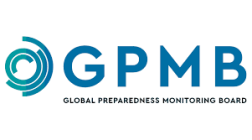
Un Mundo en Peligro
Informe anual sobre preparación mundial para las emergencias sanitarias
Junta de Vigilancia Mundial de la Preparación

A WORLD IN DISORDER
Global Preparedness Monitoring Board

The Economic Impacts of Learning Losses – September 2020.

Crisis estelar. La más sencilla predicción sobre lo venidero, y probablemente la más acertada, es que la mayoría de los pronósticos serán incompletos. Lo único claro es que el futuro, una vez superada la crisis, planteará nuevas reglas de juego, con profundas consecuencias a todos los niveles. Roberto M. Álvarez del Blanco, Stern School of Business, New York University (NYU), Junio 2020.
Videos
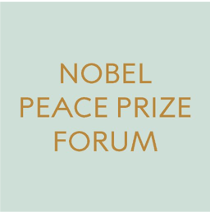
Five of the 2021 Nobel Prize laureates met digitally on 4 December 2021 for the traditional round-table discussion and TV programme Nobel Minds hosted by the BBC’s Zeinab Badawi. The laureates discussed their research, discoveries and achievements and how these might find a practical application. Participants: Klaus Hasselmann, Nobel Prize laureate in physics; Benjamin List, Nobel Prize laureate in chemistry; Ardem Patapoutian, Nobel Prize laureate in physiology or medicine; Abdulrazak Gurnah, Nobel Prize laureate in literature; David Card, laureate in economic sciences. They discussed the theories, discoveries and research behind their awards, and the value of science in dealing with the global pandemic. (47:17)

Evolutionary compensation: how variants of the coronavirus can self-destruct (Omicron and the other variants of COVID). This video explains what requirements WHO needs to classify a SARS-CoV-2 mutation as a variant of interest and how it differs from a variant of concern. Viruses are constantly mutating. Scientists classify each mutation with a code that identifies the affected genetic sequence. But, sometimes, mutations add up to each other and improve the virus’ ability to spread, modifying the severity of the disease, or the effectiveness of vaccines and therapies. Even so, all this is not enough for the WHO to consider a variant as dangerous. This video explains what requirements a strain of SARS-CoV-2 must have to be considered a variant of interest, and how it differs from a variant of concern. So far, 13 variants have been detected that due to their special characteristics have become a new lineage of the coronavirus. Omicron is only the last of these strains to be identified with Greek letters. Among them there are also variants that have been declassified and are no longer of particular concern. But mutations can also become a weapon of self-destruction for the virus itself. This is the so-called evolutionary compensation, and in this video, you can discover what it is. (6:19)

A COVID-19 Update: Vaccines and Variants. The Rockefeller University Virtual Discussions with Genuine Experts, September 14, 2021. Speakers: Richard P. Lifton, M.D., Ph.D. President and Carson Family Professor Laboratory of Human Genetics and Genomics, The Rockefeller University, Paul Bieniasz, Ph.D. Professor Laboratory of Retrovirology Investigator, Howard Hughes Medical Institute. In this webinar, President Rick Lifton provides an update on the state of the COVID-19 pandemic. He is then joined by virologist Paul Bieniasz to address critical questions on the latest vaccine and variant data. Rockefeller University leads global university ranking in measure of top cited publications and it is first globally in a measure of impact based on citations during the seventh consecutive year. The university also boasts the highest percentage of its publications included among the world’s top 10 percent most cited publications. (1:19).

Is the Delta variant the advance of a coronavirus supervariant? For a virus to mutate and variants to occur is the most normal thing. The vital mission of a virus is to find a host to replicate as widely and quickly as possible. But in this process, not all copies are perfect. Sometimes errors occur, changes in your genetic sequence that are known as mutations. And when one of these erroneous copies, with one or more mutations, manages to continue replicating in other hosts successfully, it gives rise to what we know as a “variant” of the original virus. And although most mutations and the consequent variants do not always give advantages to the virus, in a pandemic scenario, the very high transmission plays in favor of the statistic of the worst evil. So, can we expect the arrival of some kind of supervariant yet to be developed? The good news is that experience with other similar viruses points the way to the possible and known. It’s the concept of evolutionary compensation: to get better at one thing, you often have to get worse at another. That is, the natural limits themselves act as a brake for the appearance of a supervirus that has all combinations of negative mutations – in Spanish (6:56):

A Pandemic Guide to Solving Problems with Science
Peter Doherty, Nobel Prize in Physiology or Medicine 1996, and patron of the Doherty Institute at the University of Melbourne; Jennifer Doudna, Nobel Prize in Chemistry 2020, Professor of Biochemistry and Biophysics at the University of California, Berkeley; Anthony Fauci, Director of the National Institute of Allergy and Infectious Diseases at the National Institutes of Health. Moderated by author and policy analyst Laurie Garrett. This discussion was part of the first Nobel Prize Summit. The event brought together Nobel Prize laureates, scientists, policy makers, business leaders, and youth leaders to explore the question: What can be achieved in this decade to put the world on a path to a more sustainable, more prosperous future for all of humanity? (30:23).

The theme of this year’s forum is ‘Multilateralism and Global Governance in the Wake of the Corona Pandemic’. This year’s Nobel Peace Prize Forum will address how the Corona pandemic is affecting the conditions for international cooperation and global governance, and what the long-term consequences of this might be. While most experts agree that the COVID-19 crisis is a game changer in world affairs, they disagree on whether it will strengthen or weaken multilateralism, support or undermine the present international order, or make the world better or less prepared to handle unforeseen global crises in the future. UN Secretary-General, António Guterres will deliver the keynote speech, followed by a panel discussion. Participants include World Food Programme’s Executive Director, David Beasley, former Director-General of the World Health Organisation, Gro Harlem Brundtland, President and CEO of the International Crisis Group, Robert Malley, and Norwegian Minister of Foreign Affairs Ine Eriksen Søreide. The Nobel Peace Prize Forum 2020 is made possible with support from the City of Oslo, and is part of Oslo Peace Days, a collaboration between the Norwegian Nobel Institute, the Nobel Peace Center, the City of Oslo, the University of Oslo and the Peace Research Institute Oslo, (1:12.33).
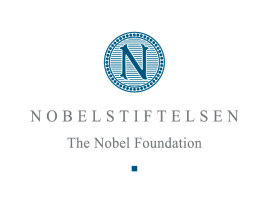
The Nobel Foundation. We take a look back at this discussion, held before the coronavirus pandemic, with Nobel Laureate Peter Doherty and writer Hanne-Vibeke Holst, in conversation with science journalist Amina Manzoor, (58:03).
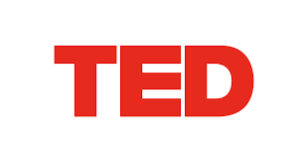
En 2014, el mundo pudo evitar un terrible brote de ébola, gracias a miles de generosos trabajadores de la salud, y también, francamente, gracias a muy buena suerte. Pero ahora es el momento, sugiere Bill Gates, de poner todas nuestras buenas ideas en operación, desde la planeación por escenarios, pasando por la investigación sobre vacunas y el entrenamiento de trabajadores de la salud. Como él dice: “No hay necesidad de provocar pánico… pero hay que ponerse en marcha“, (8:24).

Professor Robert Engle, professor of Finance at Stern School of Business of New York University and Nobel Prize in Economics 2003, considered the “father of Financial Econometrics”, presented a live virtual lecture entitled “Measuring the Financial Impact of Covid-19” on April 7. The conversation was moderated by Professor Viral Acharya. This is part of the Stern seminar series “Faculty Insights: Covid-19 and NYC“, (57:22).

Jennifer Garner had a candid chat with Dr. Fauci about he coronavirus. She shared a video with him on Instagram writing, “Conversation with Dr. Fauci Back-to-School/vaccine/sports/and more questions answered here. I love Dr. Fauci—and you will, too.” They talked about a lot of topics surrounding COVID-19, and Jennifer Garner even asked when film fans will be able to return to theaters. Dr. Fauci responded saying he doesn’t think the public will be safe to go to the movies for over a year: (37:13).
ex·pe·ri·en·tial

Boeing and the University of Arizona partnered to conduct a unique study. We put a live virus on an airplane to validate the effectiveness of our airplane cleaning recommendations. The virus, MS2, is safe to humans and harder to kill than SARS-CoV-2, the virus that causes COVID-19. Learn more about the first-of-its-kind test, and the results. (1:44)

High speed camera captures how different types of face masks work.
Which mask works best? To visualize droplets and aerosols, the University of New South Wales (UNSW) researchers used LED lighting system & a high-speed camera, filming people coughing and sneezing in different scenarios — using no mask, 2 different types of cloth masks, and a surgical mask. We confirmed that even speaking generates substantial droplets. Coughing and sneezing (in that order) generate even more. A three-ply surgical mask was significantly better than a one-layered cloth mask at reducing droplet emissions caused by speaking, coughing and sneezing, followed by a double-layer cloth face covering. A single-layer cloth face covering also reduced the droplet spread caused by speaking, coughing and sneezing but was not as good as a two-layered cloth mask or surgical mask. We do not know how this translates to infection risk, which will depend on how many asymptomatic or mildly symptomatic infected people are around. However, showing a single layer is not as good a barrier as a double layer.
How covering and mask minimizes spreading coronavirus (1:49),

So can we get covid-19 even if we wear FFP2 or surgical masks?
Misuse of the mask causes half unfiltered air to pass through gaps that look small. José-Luis Jiménez, a scientist at the University of Colorado and one of the world’s leading aerosol experts, has demonstrated through a video the importance of adjusting the mask well to the face to prevent Covid-19 contagions. The scientist explains that contagions are mainly caused by aerosol inhalation. And the adjustment of the mask is also extremely important. This has been demonstrated in a video “The adjustment is a very big problem for the use of masks for the general population. Through the gaps that seem small passes half the unfiltered air. In this video, you see three masks, the N95 and the surgical one which are poorly adjusted and have a lot of leaks.” He adds that “if there are gaps between face and mask, it is easier for the air to go through”: “A 2% gap in the mask area lets 50% of the unfiltered air pass through!”

It’s not a photo (you can’t photograph a virus), but it’s not a computerized model either. A team of researchers in three countries has achieved the first real, three-dimensional image of SARS-CoV-2, a breakthrough that can help scientists fight it. This is the closest thing to showing the actual appearance of the virus thus far. Nanographics is the Austrian company that created the image, along with university centers in China and Saudi Arabia. To obtain the spherical object from which the famous spikes arise, a cryoelectronic tomography technique is used where the frozen sample is scanned from different angles using an electron microscope. The data obtained is transformed into three-dimensional images using algorithms. The tomography has been performed at Tsinghua University in China, and the data obtained has been segmented by experts from king Abdullah University of Science and Technology. Finally, Nanographics removed the noise from the original image, rendered it and assigned it optical properties and colors. Keep in mind that a virus is smaller than the wavelength of visible light and, therefore, does not even have color. The pink and blue tones used in the image are indeed “false”, with the goal of helping better represent the shape of the virus. What is real is the form of the virus, something that is of great importance for scientists looking for ways to combat it. Scientists who research vaccines and cures need to know the shape of molecules; if you see them in 3D, it is easier to know how they work.

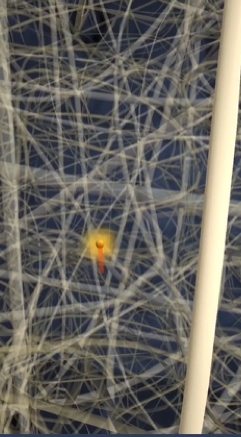


This 3-D Simulation Shows Why Social Distancing Is So Important. Public health experts and elected officials have emphasized again and again that social distancing is the best tool we have to slow the coronavirus outbreak. The Centers for Disease Control and Prevention encourages people to stay at least six feet away from others. The World Health Organization recommends a minimum of three feet of separation. Scientists are learning about the novel coronavirus in real time, and those who study similar respiratory illnesses say that until it is better understood, no guideline is likely to offer perfect safety. Instead, understanding the possible transmission routes for the virus can help us see why keeping our distance is so important.
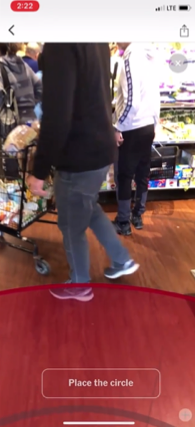
We used augmented reality to show you how social distancing guidelines can apply in real life: at the grocery store, on the sidewalk, or anywhere else. See the video of this here. To experience this in your space, you will need to use the NYTimes iOS App on a newer iPhone or iPad. The augmented reality experience is available only on newer iPhones and iPads using the NYTimes app. To view on the app, open the camera on your device and point to the QR tag below.

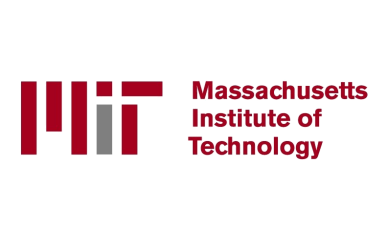
Asymptomatic people who are infected with Covid-19 exhibit, by definition, no discernible physical symptoms of the disease. But it seems those who are asymptomatic may not be entirely free of changes wrought by the virus. The differences between a cough of an asymptomatic patient and a healthy individual are not decipherable to the human ear, but it turns out that they can be picked up by artificial intelligence. A team of MIT researchers have developed an AI model that can distinguish asymptomatic people with COVID-19 from healthy individuals without the disease through forced-cough recordings.

Laser/imaging tech shows how COVID-19 is spread by talking. Micro-droplets released in conversation can drift through the air and contribute to spreading coronavirus, according to researchers from Toho University in Japan. This was demonstrated during an experiment aired by Japanese public broadcaster NHK. The translated TV segment can be viewed in the video below. The team used laser beams and a high-sensitivity camera to visualize how micro-droplets as small as 0.1 micrometers wide travelled between two people having a conversation. Although the droplets didn’t spread as far through the air as through a sneeze, the tiny droplets could be seen floating and lingering in the air between the two people talking. (6:40)

Robots Joining the Front Lines to Battle COVID-19. Johns Hopkins is testing a small robot attached to a touchscreen ventilator so that no one has to wear protective equipment and risk infection entering an intensive care unit room, (2:21)
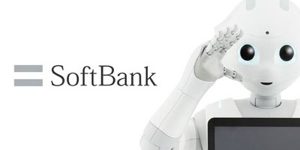
Covid-19: Mask wearing detection with Pepper the robot. Since July 20, anyone 11+ years of age must wear a mask in closed public places in France. This measure also is highly recommended in many European, African and Persian Gulf countries. To support businesses and public places, SoftBank Robotics Europe unveils a new feature with Pepper: AI Face Mask Detection. This new feature does not retain or use personal data, (1:00).

Flow Inmersive, Augmented Reality (AR). Experience for yourself at a.flow.gl in AR on your mobile device, (WebXR Viewer on IOS, or Chrome on Android), on laptop, Magic Leap, or Oculus headsets, (4:25).

Keith Mortman, MD talks about a virtual reality (VR) rendering created to see inside a COVID-19 patient’s lungs at the George Washington University Hospital. The patient is in his late 50s and the only underlying medical condition he has is high blood pressure. He was intubated and connected to a mechanical ventilator. There is rapid progression, and damage to the lungs. Young people are now becoming infected with COVID-19. Some are asymptomatic carriers and may not shows signs or symptoms of the disease. They can pass the virus on to other people they come in contact with, (1:33).

